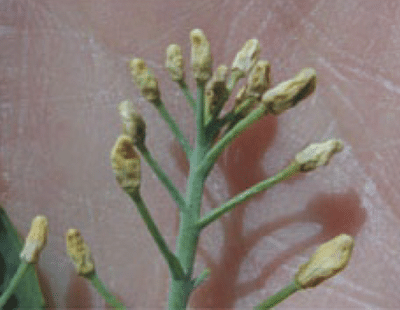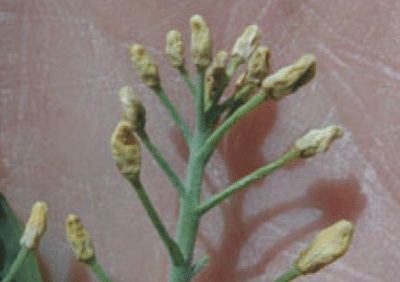Hot days (28-30°C and up) and warm nights (16°C and up) from bud to mid-flowering stages can have a significant effect on canola yield.
Cool nights offer some recovery from hot days. Warm nights do not provide a recovery period, and more flowers are aborted, producing blanks along the stem. Even with a few days of heat, it can take a week for hormone balance and regular pod formation to return. Recently opened flowers with shortened stamens that don’t protrude above the petals can be a sign of heat damage. With the current heat spell, when checking canola fields for sclerotinia timing, you could also look for heat damaged flowers.

When heatwaves and flowering coincide, boron is often touted as a remedy, but this touting rarely, if ever, comes from people who’ve done or read the research. When Alberta Agriculture oilseed specialist Murray Hartman ran his meta-analysis of boron studies, results showed no relationship between boron response and temperature. In short, analysis showed no boron response – even when temperatures were hot at flowering.
The Canola Council of Canada boron trials as part of the Ultimate Canola Challenge in 2013-15 found no consistent yield benefit from boron treatment, including in those plots with very high yield results. Read results.
Low cost does not justify boron. Farmers hear of many $5/ac treatments that fall into the low risk/low reward category. They become high risk/low reward if growers start to apply numerous “low cost” treatments per year. If growers want to test boron or any of these other treatments for themselves, try a few test strips (testing one treatment at a time). Put test strips in uniform parts of the field and follow protocols.
Further reading:
Murray Hartman Agronomy Update presentation
Ontario boron study report

